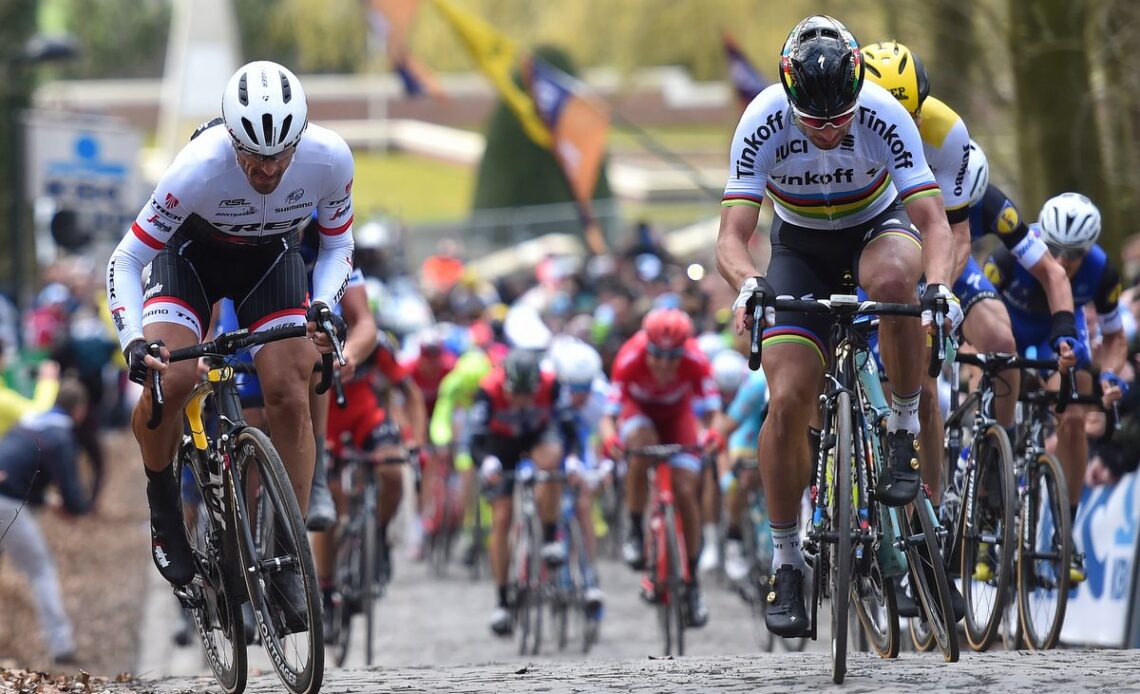The Kemmelberg is a cobbled climb that forms the final selection at Gent-Wevelgem, one of the major Spring Classics.
The super-steep gradients never fail to light up the action and, with some 30km still to race into Wevelgem, it often leaves the races – both men’s and women’s – finely poised between the attackers and sprinters.
The Kemmelberg is found away from the Flemish Ardennes that play host to most of the Flemish Classics. In fact, it doesn’t even start in Gent anymore. It never really did, but now it’s nowhere near, moving in 2020 all the way over to Ypres on the very western flank of Belgium, and finishing not far away in Wevelgem.
That area played host to much of the fighting in World War One, the memory of which has formed an increasingly central part of the modern identity of Gent-Wevelgem, which carries the moniker ‘In Flanders Fields’.
War graves abound, the Menin Gate forms a symbolic archway to the race’s finale, and the gravel ‘plugstreets’ pass old battlegrounds and the Christmas Truce memorial. The Kemmelberg is also steeped in war history, forming a key strategic point of high ground – at 156m it’s the highest point of West Flanders – as it juts up above the village of Kemmel.
As such, it was the scene of a number of battles between German and Allied forces during the war, notably towards the end of the conflict in the particularly horrific Fourth Battle of Ypres.
The Kemmelberg has been used in Gent-Wevelgem since 1955, becoming the key climb in the finale from 1962. It has also featured in numerous other races, including the Three Days of De Panne, Four Days of Dunkirk, Handzame Classic, Eurométropole Tour, Great War Remembrance Race, and even the World Championship in 1950.
There are three sides to the Kemmelberg: conjoining roads from the east and west, and a lesser-spotted tarmacked ascent from the south. All three have featured in Gent-Wevelgem, but it’s the ascent from the west (Ossuaire) that is best known, coming as the final climb before the long run-in.
It starts gently, dragging up before the cobbles begin as the race enters the trees. From there, it ratchets up steadily to a stinging 23% in the final 200 metres of the 800m total. The cobbles are also some of the roughest around, and gaps can open up in the space of a few pedal strokes.
The opposite side of the Kemmelberg – the Belvedere ascent to the west – is a shorter climb at 500 metres, and just…
Click Here to Read the Full Original Article at CyclingNews RSS Feed…

